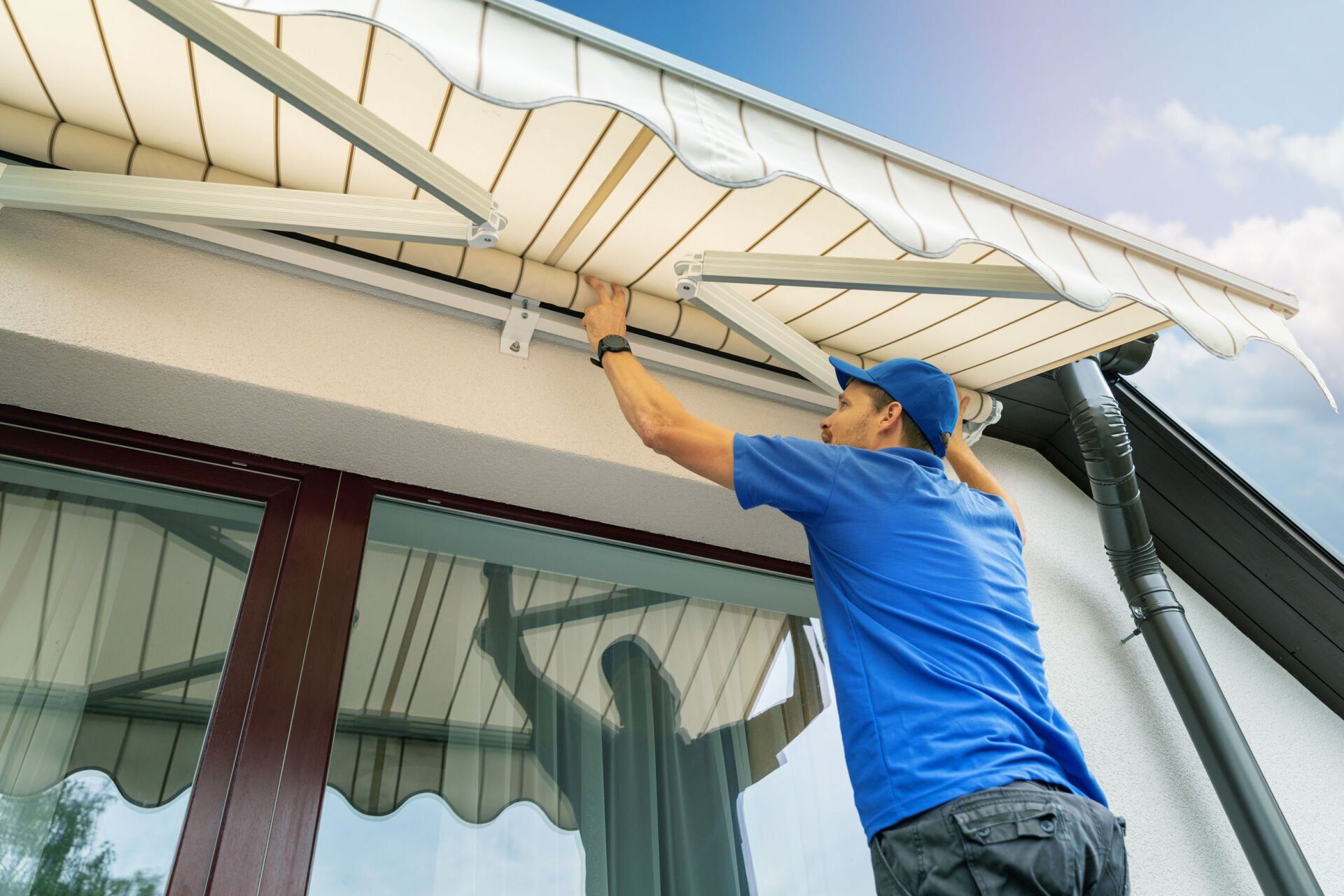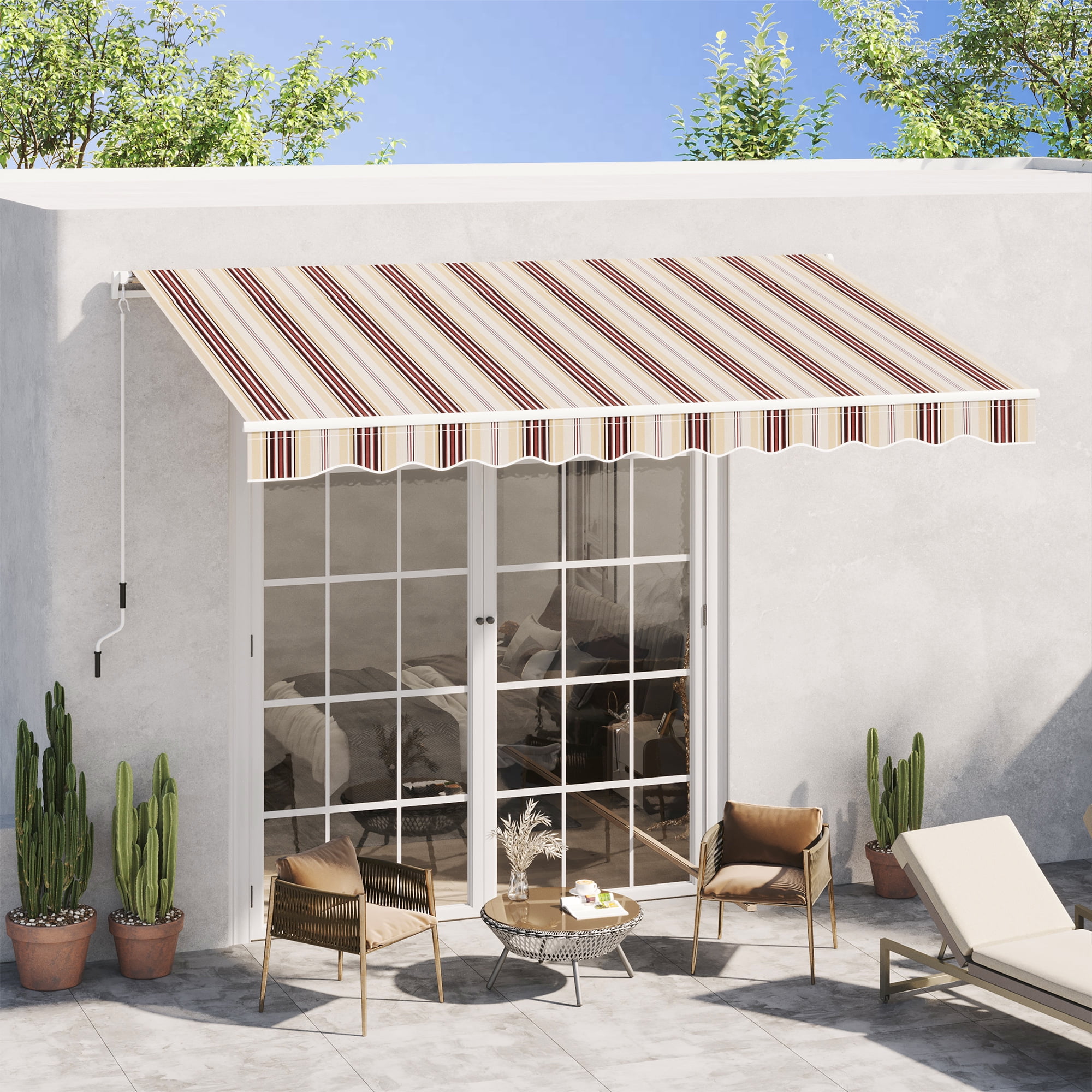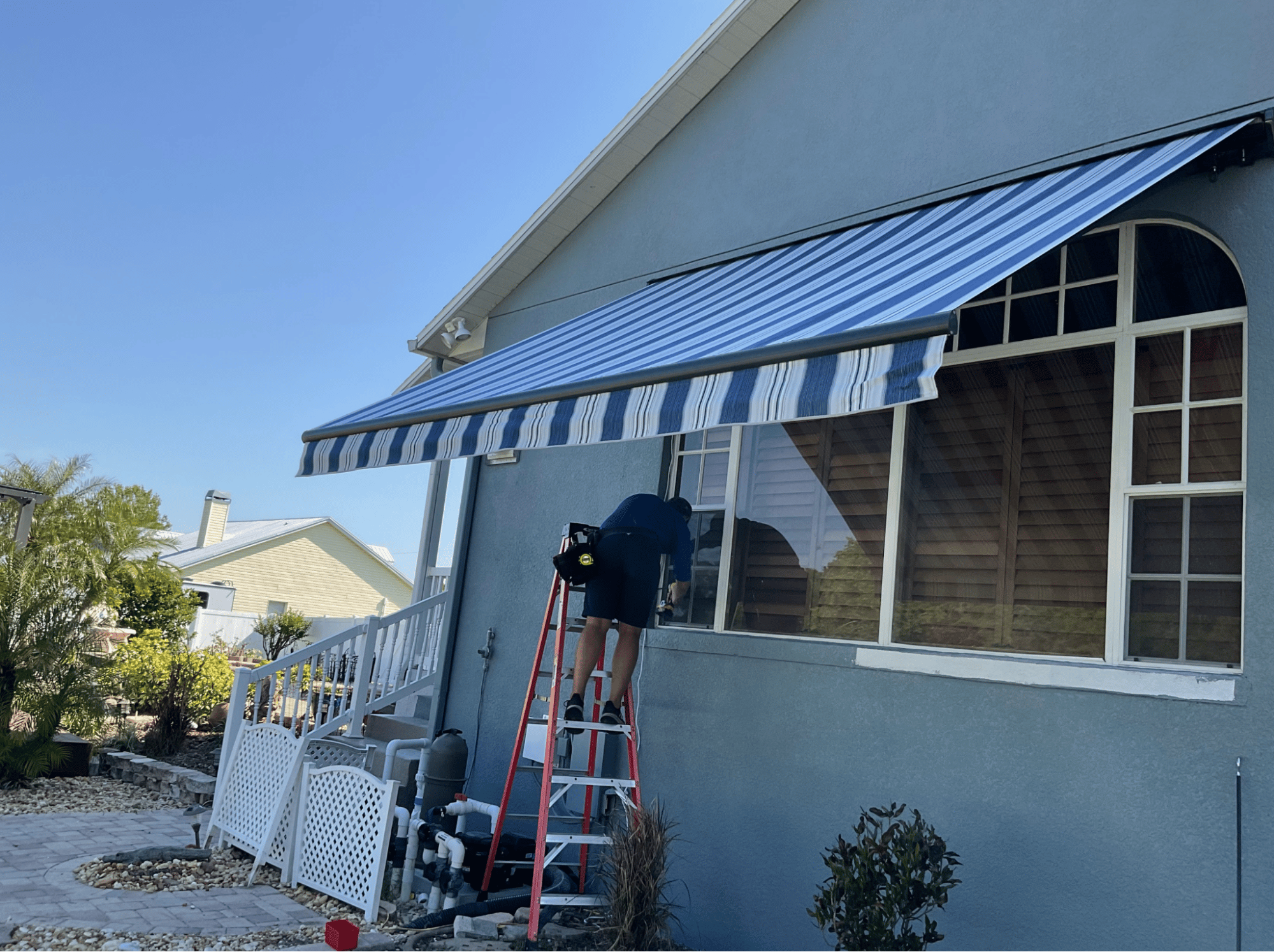Introduction: The Serene Shelter of Awnings, Unveiled
In the realm where outdoor living spaces merge with functionality, manual retractable awnings stand as a testament to human ingenuity. They are more than just fabric shelters; they are versatile extensions of our homes, providing shade on scorching days and allowing us to enjoy the outdoors in comfort. However, like any mechanism, these awnings may occasionally falter, requiring troubleshooting skills to restore their seamless operation. This comprehensive guide delves into common issues faced by manual retractable awnings and offers practical solutions to ensure your outdoor haven remains a sanctuary.

Section 1: Understanding the Mechanics
The Heart of the Matter: Components Overview
Before diving into troubleshooting, it’s essential to grasp the basic anatomy of manual retractable awnings. At its core, an awning consists of a fabric canopy, a roller tube, a frame (usually aluminum), an operating crank or handle, and a set of support arms. Understanding how each part functions is the first step towards diagnosing and resolving issues.
Section 2: Common Issues & Their Remedies
Stuck in Place: Awning Won’t Extend or Retract
One of the most frequent complaints is an awning that refuses to budge. This issue often stems from debris accumulation or fabric tension. Begin by checking for any obstructions in the roller mechanism and cleaning the tracks. If the fabric seems overly tight, gently loosen it using the adjustment screws located near the roller tube, ensuring even tension across the width.
Twisted Reality: Fabric Misalignment
A twisted or unevenly rolled fabric not only looks unsightly but also affects the awning’s stability. This typically results from incorrect winding or wind damage. To rectify, fully extend the awning and manually straighten the fabric, using gentle pressure along the length. Then, carefully retract it, ensuring the fabric rolls evenly onto the tube.

Weather Woes: Leaks and Tears
Exposure to the elements can lead to leaks and small tears in the fabric. Prompt repair is crucial to prevent further damage. For minor leaks, applying a waterproofing solution can suffice. Tears require patching with a fabric-specific adhesive or, if extensive, professional replacement.
Section 3: Maintenance Matters
Preventive Care: Regular Cleaning and Inspection
Regular maintenance is the key to prolonging your awning’s lifespan. Schedule annual inspections to check for signs of rust, loose screws, or worn parts. Clean the fabric using a mild soap solution and a soft brush, rinsing thoroughly to remove dirt and debris that can cause wear.
Lubrication Station: Smooth Operation Guaranteed
Ensure smooth operation by lubricating moving parts annually. Apply a silicone-based lubricant to the pivot points, roller tube bearings, and the crank mechanism. This simple step can significantly reduce friction and prevent stuck components.
Weather-Ready: Preparing for Storms
Preparation is key during storm season. If strong winds or hail are forecasted, retract the awning fully to prevent damage. Installing wind sensors can automate this process, adding an extra layer of protection.

Section 4: Advanced Troubleshooting
When Cranks Go Awry: Handle Malfunction
If the crank feels excessively difficult to turn or doesn’t turn at all, the problem might lie with the gear mechanism. Inspect for any visible damage or debris blocking the gears. In some cases, disassembling and cleaning the gear assembly, followed by re-lubrication, may be necessary. If the gears are damaged, professional assistance is advised.
Frame Follies: Bent or Misaligned Supports
Support arms that are bent or misaligned can hinder the awning’s function and stability. Gentle adjustments may correct minor misalignments, but severe bends require the attention of a professional who can either straighten or replace the affected parts.
Section 5: Professional Help & When to Call
DIY vs. Professional Intervention
While many issues can be addressed through DIY methods, there are instances where professional assistance is recommended. Complex mechanical failures, extensive fabric damage, or electrical problems in motorized awnings are best left to experts. Attempting complicated repairs without the right tools or knowledge can exacerbate the problem and void warranties.

Selecting the Right Professional
When seeking professional help, look for companies specializing in awning repair and maintenance. Verify their credentials, read customer reviews, and request quotes before committing. A reputable professional will provide a detailed diagnosis and a clear plan of action.
Embracing Innovation: Upgrades and Enhancements
As technology advances, so do the features of manual retractable awnings. Motorization is one such innovation that transforms the user experience, allowing you to control your awning with the touch of a button. While this adds convenience, it also introduces new potential troubleshooting areas, such as electrical malfunctions. Regular checks on the motor and ensuring its compatibility with surge protectors can prevent electrical issues. Moreover, integrating smart home systems enables remote control through smartphones or voice commands, further enhancing the awning’s adaptability to changing weather conditions.
Design & Aesthetics: Complementing Your Outdoor Space
Awnings today come in a myriad of colors, patterns, and materials designed to complement any architectural style. When selecting a fabric replacement or upgrading your awning, consider factors like UV resistance, durability, and colorfastness to ensure longevity and aesthetic appeal. Customizable options allow homeowners to match their awnings to their exterior decor, turning an functional element into an integral part of the home’s exterior design.

Eco-Friendly Solutions: Shading with Sustainability
Sustainability is a growing concern for many homeowners, and modern awning designs reflect this trend. Fabrics made from recycled materials or those designed to enhance energy efficiency by reducing heat transfer into the home not only contribute to a greener environment but also lead to cost savings on cooling bills. Additionally, solar-powered motors for retractable awnings are an environmentally friendly alternative, harnessing the sun’s energy to power the convenience of motorization.
Community and Regulations: Compliance and Neighborly Considerations
Before installing or making significant modifications to your awning, it’s important to be aware of any local regulations or homeowner association guidelines. Some communities have rules governing the size, color, or type of awnings allowed. Furthermore, consider the impact on your neighbors, ensuring that your awning does not obstruct their view or cause unnecessary shading on their property. Good communication and adherence to regulations foster a harmonious neighborhood environment.
Conclusion: Preserving Your Outdoor Oasis
Manual retractable awnings are more than just sun shields; they symbolize relaxation and the enjoyment of outdoor living. By staying vigilant with maintenance, promptly addressing issues, and knowing when to call in the professionals, you can ensure your awning remains a reliable and beautiful feature of your home for years to come. With each troubleshooting success, you reinforce the tranquility of your outdoor haven, making every sunny day an invitation to unwind under the comforting shade of your well-maintained awning.